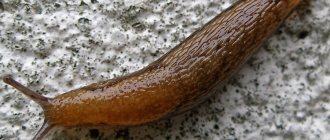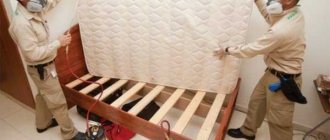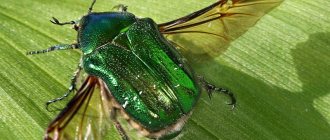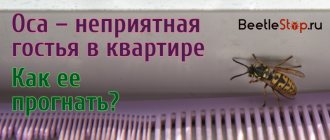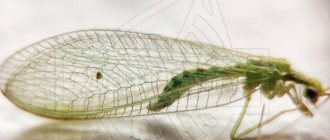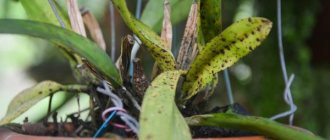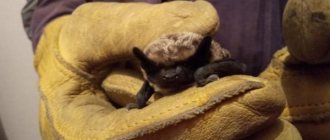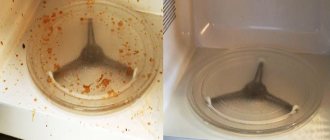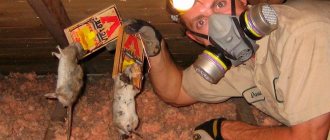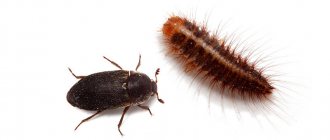No matter how hard you try to keep your apartment clean and tidy, sometimes pests invade. More often the threat comes from bedbugs and cockroaches, but have you ever heard of the leather beetle? This little parasite cannot be called harmless. He is an infrequent guest, but he brings quite a lot of trouble.
You might think that, based on the name of this insect, it feeds only on skin, but, alas, there is nothing inedible for the leather beetle. The leather beetle causes significant damage to food, clothing and furniture. These beetles love to feast on leather, furs, wool, museum exhibits, books and upholstered furniture. Such a variety of taste preferences allows skin beetles to be found both in the closet with clothes and in the utility room with bags of grain and other products. Carpet beetles are insatiable insects; if you don’t start fighting them in time, they will destroy everything around you. In addition, carpet beetles are harmful to human health. Before you start destroying the skin beetle, you need to study this parasite, what it looks like, what it likes or doesn’t like, where it lives. Simply put, you need to know the enemy by sight.
Who is he?
To recognize a leather beetle, you need to know what it looks like. So, this is a very small oval dark brown or even black insect with hard wings, no more than 3 mm in length. The larvae of carpet beetles reach 2 mm in length. The body is covered with tiny hairs, and at the end of the body there is something in the form of a tail-tassel. The skin beetles move slowly, and when touched they immediately turn belly up, pretending to be dead.
These insects reproduce very quickly; the female leather beetle lays about two and a half dozen eggs at a time. In a month, a larva emerges from the egg, and in less than a year, the larva reaches the adult stage. The appearance of these beetles occurs during the warm season, namely May. But the appearance of these beetles may not be related to the time of year or the cleanliness of your apartment. You can also bring skin beetles into your apartment with books you took from an infected library, or with infected things and furniture. The adults of these insects can fly, and you can see them during the daytime, and if there is an adult beetle, there are also its eggs and larvae. And there are many of them. A clear sign of the appearance of a leather beetle in your apartment is the skin that the beetles shed, but also the damage on objects themselves.
Brown beetles - little uninvited house guests
An important distinguishing feature of the leather beetle from some other insects is its love for dryness and warmth. Most often, leather beetles live on window sills, near heating appliances, in window frames and in closets with clothes. The beetle larvae will be hidden from your eyes; they live in inaccessible places where a lot of dust accumulates, and apartment owners rarely get to this place when cleaning. For example, under the baseboard. Well, or any other darkened place. The favorite place of the leather beetle in your apartment is the upholstery of upholstered furniture.
Carpet beetle: how to identify the pest?
A typical representative of the species, Smirnov's leather beetle
The carpet beetle (Dermestidae) is a family of insects from the order Coleoptera. It includes about 600 species.
Such a beetle can have a wide variety of colors. The insect is quite easy to distinguish by the physique of the adults and the appearance of the larvae. The pest creates large groups. At the sight of danger, the skin beetle falls to the ground and pretends to be dead.
Appearance
All representatives of this family have an oval or elongated body. They are small in size: length no more than 1.2 cm, and width no more than 0.5 cm. The upper part of the body is convex. The head is small and fits tightly to the thoracic segment. The distinctive features of skin beetles are:
- the body is in most cases covered with hairs and scales;
- antennae of short or medium length (from 4 to 11 segments), they have a club-shaped shape;
- the elytra are always complete;
- There is a special groove on the front of the chest to hide the antennae.
The color of insects varies greatly. The most common are brown and black species without markings. However, there are also many species that have clear spots of white, yellow or red flowers.
The eyes are medium-sized, mostly black. The oral apparatus is exclusively of the gnawing type. The limbs are thin and consist of 5 segments. The wings of most species are well developed. There are varieties with complete or partial absence of wings (most often in females).
The degree of manifestation of sexual dimorphism varies. Males often have white or light yellow hairs on their abdomen. Females have an elongated ovipositor. For some species, the main difference is the absence of wings in females. In this case, males of the same species may have fully or partially developed wings.
Varieties
As already mentioned, there are about 600 species belonging to the skin beetle family. Most of them are pests. Some species of skin beetles live in the nests of bees, wasps, hornets or ants. Pollen becomes the basis of the diet of many beetles at the imago stage. A small part of the species at the adult stage is characterized by aphagia, i.e. a complete lack of nutrition. Insect larvae always pose the greatest threat. The most common and harmful varieties of skin beetle are:
Museum beetle (Anthrenus museorum)
Body length ranges from 0.2 to 0.35 cm. It is found in many countries and is distinguished by its unpretentiousness to living conditions. Most often it can be found in Europe, Northern Kazakhstan, the Caucasus and the Far East.
It starts up quite rarely in houses. This species poses a huge threat to museum exhibits. Stuffed animals are their favorite food. It is believed that the museum beetle has set a record for the destruction of museum exhibits among all possible pests. The beetle can also live on indoor plants. The color of most beetles is black, with white and light brown spots.
Grain beetle or nylon beetle (Trogoderma granarium)
The beetle is native to India. The grain beetle has become quarantine in many countries, including Russia. Found in Europe, Asia, Africa, South America, New Zealand.
However, at the moment it has been eliminated in most places, in particular in Russia, North America, a number of European countries, and Indonesia. Australia, Kenya, South Africa, Tanzania, etc.
Most often, the nylon beetle feeds on grain crops, copra, peanuts, pasta, cotton and flax seeds. The pest is capable of destroying huge amounts of crops. The size of the beetle ranges from 0.2 to 0.3 cm. Adults cannot fly. Coloration varies from pale yellow to dark brown. There are no marks.
Smirnov's carpet beetle (Attagenus smirnovi)
In nature, it lives in bird nests. The insect can often be found in heated rooms. Body length is about 0.3 cm. The color is predominantly bright brown. Typically, the basis of the diet of the Smirnov skin beetle is wood. Therefore, the pest often damages window sills, window frames and the inside of furniture. Kozheed Smirnova loves paper, artificial and natural fabric, meat and dried fish.
Ham skin beetle (Dermestes lardarius)
The ham skin beetle is the most common species on the Eurasian continent. The pest is especially dangerous for beekeepers and silkworm breeders. He is not picky about food and can consume foods of both animal and plant origin. It has relatively large sizes - from 0.7 to 1 cm. The color is black. The color of the front part of the elytra varies from dirty beige to bright red. On a light background you can see distinct dark brown spots. The antennae are red or brown.
The carpet beetle is found in Europe and Asia and is widespread in the territory of the former USSR. The ham skin beetle is a quarantine object for Slovakia and the Czech Republic.
Carpet beetle (Attagenus unicolor)
Unlike most members of the family, the carpet beetle is active at night. In natural conditions it inhabits bird nests. Often settles in human homes, hiding in clothes, furniture, carpets and fur products. The carpet beetle feeds on organic remains of house dust, damaging fur, wool, skin, feathers, silk, flour, grain, etc. It should be borne in mind that only the larvae pose a threat. The size of representatives of this species does not exceed 5.5 cm. The color is uniform from light brown to black.
The carpet beetle is common in Europe, Asia, Mexico, Canada, USA, Australia, Japan, China, Mongolia, and the Korean Peninsula. In Russia it is found in the Amur region, Khabarovsk and Primorsky territories.
House beetle (Anthrenus verbasci)
The brown leather beetle is a polyphage. The larvae damage numerous products and goods of animal origin, zoological and botanical collections. The house leather beetle is often found in industrial and warehouse premises and can live in residential buildings. Body size – 0.35 cm. The top of the body is covered with yellow, dark brown and light gray scales.
The carpet beetle is widespread. It is often found in Europe, Iran, China, Northern Kazakhstan, the Caucasus, the Far East and southern Siberia. The brown beetle is a quarantine object in Slovakia.
Frisch's carpet beetle (Dermestes frischi)
Frisch's carpet beetle poses a serious threat to leather and suede products, meat and bone meal, and dried fish. Less often it damages flour products and cocoa beans, sometimes grain products. The size of the Frisch skin beetle varies between 0.6-0.9 cm. The color is matte black. The setae are sparse, mostly white and black.
Widely distributed in the southern and central black earth regions of the Russian Federation, temperate zones of Eurasia and North America.
Spotted leather beetle (Dermestes maculatus)
A very common species, found almost everywhere. Body length is from 0.5 to 1 cm. The body is elongated, the color is predominantly black. The spotted leather beetle is covered with white bristles. It feeds mainly on animal products such as meat, fish, cheese and milk powder. The spotted leather beetle damages raw hides, museum exhibits, silkworm cocoons, and fur.
All skin beetles have a high reproduction rate. Many of them pose a threat not only at the larval stage, but also at the adult stage. It is important to know that an insect in the pupal state may not eat for 4 years. It is thanks to this that the pest has become so widespread and has become a quarantine object in many countries.
Spreading
Due to the diversity of species, the skin beetle lives in all geographical zones, not counting the tundra. The insect prefers to settle in places with low humidity. A hot, dry climate is ideal for the pest. Thus, the skin beetle is especially common in deserts and semi-deserts, in dry steppes. Only a small part of the species lives in the temperate zone, and insects are practically absent in tropical forests. Some species live in mountainous areas.
Lifestyle and life cycle
Most skin beetles are active during the day, but there are exceptions. The larvae, in turn, are active around the clock. Beetles live in large groups without a strict hierarchy. Insects in nature do not have a specific place of residence and often migrate from one food source to another. They can hide in the following places:
- nests of birds and some insects;
- cracks and cracks in the bark;
- animal corpses;
- plant roots;
- fallen leaves and rotten wood;
- burrows of rodents and some predators.
In most cases, the pest settles directly on food. If food does not provide sufficient shelter, the group finds a suitable place nearby. Some species feed on insect corpses and choose a permanent place of residence (usually the bark or hollows of trees).
Reproduction occurs with the onset of warm weather (usually in May). Females lay a huge number of eggs during their lives - up to 4100. The lifespan of each individual is about 1 year. In this case, females die immediately after laying eggs. Thus, the overwhelming majority of varieties of this family have an annual generation.
There are species that can produce up to two generations per year. Most often, skin beetles living in hot climates have this ability. There are also insects that take two whole years to fully develop.
Females lay eggs in small groups. They usually have an elongated shape, although some species have round eggs. The length ranges from 0.3 to 2 mm. The masonry is most often located directly on the skin beetle’s food. The egg itself is transparent, so its color changes as the embryo develops. At first it is white, with time a noticeable yellowness appears. In later stages of development, parts of the embryo can be seen.
The larvae have quite striking distinctive features. Their size does not exceed 1.7 cm in length and 5 mm in width. To identify a pest, you should pay attention to the list of its external characteristics:
- body shape is fusiform or semi-cylindrical;
- the upper part of the body is convex, the lower part is flattened;
- the abdomen consists of 10 segments;
- the color of the integument is light, predominantly yellow;
- most of the body is sclerotized and has a color from bright yellow to dark brown;
- the whole body is covered to varying degrees with dense bristles;
- antennae are present and consist of 3 segments;
- the abdomen tapers towards the end of the body;
- the limbs consist of 5 segments and have a claw.
It can be noticed that the prothorax is noticeably larger than other segments of the chest. The head is small and often has the same color as the body. In many species, the bristles are distributed unevenly throughout the body. Moreover, there are noticeably more of them on the abdomen. Sometimes they are directed backwards and resemble a tail.
The duration of larval development and the number of molts depend on the amount of food and ambient temperature. Under optimal conditions, the larva goes through 5-7 molts.
The size of the pupa varies from 0.15 to 1.2 cm in length. It retains the color of the larva, but has less sclerotization. The body of the pupa is always covered with bristles of varying lengths. The type of pupa is open. The pupal phase lasts 4-20 days.
It is important to consider that this beetle has few natural enemies. This is one of the reasons for its rapid reproduction and spread. On the other hand, most members of this family cannot tolerate temperatures below 10 °C. In addition, when there is a lack of food, some species turn to cannibalism.
Danger to humans
The leather beetle that has settled in your apartment would be much more harmless if it only harmed interior items and personal belongings, but, unfortunately, this beetle can also harm human health. There is no scientific evidence that leather beetles can bite humans, but these beetles still bite people. The bite of a skin beetle is impossible not to notice, it is very unpleasant and painful, pink spots remain after the bite, and in some people the wounds begin to bleed. A skin beetle bite can be contagious to humans. The beetle infects you with worms (helminths). It's not fatal, but still very unpleasant. If you are nevertheless bitten by a skin beetle, do not scratch the bite site under any circumstances; treat the wound with what you usually use to treat insect bites. You can buy an antihistamine at the pharmacy. Visit your doctor to get tested for infections.
How to correctly “calculate and defeat” the skin beetle
Why is the leather beetle dangerous?
The beetle is gluttonous and not picky about food. It multiplies quickly, becoming a threat to even large stocks of food and fur. The pest is dangerous for museum exhibits, furniture, books and ornamental plants. The animal can even eat glue, concrete and plastic. Therefore, when settling next to a person, the pest often damages property.
Carpet beetles in a house or apartment usually feed on the following things:
- leather and fur products;
- wooden window sills and frames;
- meat and dried fish;
- cereals;
- home flowers.
The main problem is that in the early stages of infection it is very difficult to notice the pest population. In most cases, beetles are dealt with only after significant damage to property has been caused. The carpet beetle hides well and avoids contact with humans. It is often confused with other beetles and is not mistaken for a dangerous pest.
Can a skin beetle bite a person?
The name of the beetle often evokes fear in people. There are many legends that these insects feed on human skin. However, none of the myths are true. It is important to understand that the skin beetle eats only dead animals. Although leather and fur are a favorite treat for most species, they do not attack living creatures even of their own size or smaller. This is justified by the fact that the jaws of beetles are simply not adapted to such a lifestyle. An insect cannot bite through the skin of animals or humans.
However, it should be borne in mind that the natural secretions of the pest can cause an allergic reaction. It usually manifests itself as mild redness of the skin. Swelling is less common. But such an allergy does not pose a threat to human life and rarely causes serious discomfort. It manifests itself mainly from touching beetles or objects on which they feed.
It is important to pay attention to the fact that due to its lifestyle, this beetle carries a huge number of diseases. Any food touched by an insect can pose a threat to humans. Infection often occurs through scratches and wounds. For this reason, if such a pest is present, you should spend more time treating cuts and other skin injuries.
Prevention
After removing any parasitic insects from your apartment, the main thing is to prevent a relapse, namely their reappearance. To do this, it is necessary to follow preventive measures:
- Clean carpets as often as possible and vacuum regularly.
- Put mosquito nets on the windows, this will save you from getting bugs through the window.
- Place out-of-season clothes in vacuum bags, since there are plenty of these on the market.
- Don't store old things in closets. Throw away old and unnecessary things. Once a year, go through your bed linen, not letting it sit for a long time.
- Place lavender and wormwood on shelves in cabinets and chests of drawers.
- Suitcases in which clothes and other textiles are stored must be treated with boric acid once a year.
- Ventilate closets with clothes as often as possible.
By following all the above rules, your apartment will not become so attractive to the leather beetle.
Where do they come from
The leather beetle enters a person’s home in different ways: through open windows, with flowers and furniture, clothes and shoes that have been in an infested room for some time. They enter homes easily and unnoticed; for some time you won’t even know about your new “neighbors.” But getting rid of them can sometimes be very difficult; in particularly advanced cases, you may even need the help of specialists.
Ways to fight in an apartment
Before choosing a method of dealing with skin beetles and starting to fight them, you need to find their location. If you manage to find a cluster of leather beetle eggs, it is a huge success. Look under the carpet, under the baseboard. Most often, the larvae of the leather beetle settle there. During the period of struggle, it is necessary to vacuum the apartment several times a day. These manipulations will reduce the horde of eggs and larvae, but will not completely rid you of this scourge.
There are inexpensive methods of control, for example, freezing. In winter, you can freeze your apartment; these insects die at temperatures below 10 degrees. To be sure, repeat this procedure. You can treat furniture with steam, and soak clothes and bedding in hot water or boil. If these methods do not give you the desired results, then it is time to move on to chemicals.
- Boric acid powder. Powder preparations are rubbed in with a brush or simply sprinkled on the areas where pests have been noticed. Treat the baseboards and crevices, if any, with boric acid, and distribute the powder under the carpet. Boric acid is not dangerous to humans and has no odor.
- Treating wool and fur items with a weak solution (0.005%) of the pyrethroid permethrin will save you not only from the skin beetle, but also from clothes moths for a year.
- Special aerosols: Dichlorvos, Reid, Chlorophos, Raptor. To completely get rid of parasites, use the aerosol in several approaches.
- Aqueous concentrated suspensions. These products can be purchased at a specialty store. They are used in case of severe infection.
- Fumigants or tablets. For example, “Antimol”, but an adult will not take this method, but the larva will gladly swallow the tablet.
Aphids on roses: 7 effective methods to combat them
What damage can beetles cause?
So, you have a skin beetle. Why is such a “neighbor” dangerous and how to get rid of it? First of all, leather beetles destroy all things made from materials of animal origin: fluff, leather, fur, felt, silk, wool and others. They also love to chew on food products: dried and dried meat and fish, cheese, milk and cereals. Then they will not disdain books, especially old ones. Their bindings contain glue, which they also “respect” very much.
In particularly advanced cases, skin beetles can harm wires and cables, for example from a computer, chew furniture, especially upholstery, picture frames, “eat” wallpaper, especially natural wallpaper, and chew parquet.
Tips for fighting carpet beetles
- If children and animals live in the apartment, then send them to stay with relatives while the beetles are being removed.
- While processing the room, close all windows and doors so that the beetles do not have the opportunity to escape.
- After treatment, leave the apartment yourself for a couple of hours.
- Ventilate the room several times.
- Repeat treatment if necessary.
In the fight against these beetles you will need a lot of patience and endurance. Insects in the apartment are a serious problem, especially if you have a small child. You need to get rid of the leather beetle immediately. And if you are unable to cope on your own, it is recommended to call special services that will destroy all the beetles and larvae in no time, and you need to ensure that a relapse does not occur.
1.Self processing kit
An integrated approach to the destruction of skin beetles with a do-it-yourself kit will allow you to get rid of insects yourself at an affordable price. Our service offers you to purchase such a set with professional chemicals used by qualified specialists. You can read more about the set at the link. The set consists of the following components:
- professional chemistry;
- spray;
- protective gloves;
- protective mask;
- instructions;
Price of a kit for self-treatment against skin beetle: 1190 rubles. Order
You can separately purchase professional chemicals for killing insects from 100 ml.
The insecticidal product is an emulsion concentrate in the form of a transparent liquid from light yellow to red-brown color with a specific odor. Used to combat all types of crawling and flying insects. Chemistry price: 600 rub. Buy the drug
Habitats of different species
The museum leather beetle can be found on stuffed birds and animals, leather bindings of book volumes, natural fabrics and paintings. Workers at museums and exhibitions most often encounter this species. Adult beetles do not cause harm, but they lay eggs, from which voracious larvae then hatch. Adults can be seen on flowers, and larvae can be seen on dried corpses of mammals.
The kapra beetle from the genus Granivorous leather beetles lives in cereals, dried fruits, nuts, and feeds on meat and cheese reserves. This is a dangerous quarantine pest. Its homeland is India, from where, along with trade goods, it spread throughout the world. The insect prefers areas with a warm climate and breeds in granaries and food warehouses.
Spotted skin beetles are found on mammal carcasses. They are used to clean bones in museums. These insects are kept in special rooms called dermestariums. Beetle larvae can spoil food supplies of fish, meat, milk powder, and cheese. Pests are found in museums and silk production plants.
Ham skin beetles live everywhere. The larvae are practically omnivorous - they eat containers, telephone wires, wood, paper, leather, etc. They are used by taxidermists to clean skeletons. Insects are found in bird nests, burrows of wild animals, and food warehouses.
The fur coat beetle lives in apartments; its appearance may be caused by the abundance of dust on which it feeds. It can be found under baseboards, in carpets, under sofas, in cracks on the floor and furniture, and in closets. He shares an apartment with a carpet beetle - a big lover of leather, fur and house dust. These beetles eat feathers and down in pillows, blankets and duvets, spoil things, stocks of cereals, flour and plant products.
Where do beetles and their larvae live?
Carpet beetles prefer heat and dry conditions and eat organic dust particles, dead skin cells and hairs. They get to the products; plastic or paper packaging cannot interfere with them. Unlike other insects, they are insensitive to the dryness of the substrate, and easily reproduce in cereals and flour with a moisture content of only 6%.
Adult beetles can settle on flowering indoor plants by flying through the window, and their food is pollen. Some adult skin beetles live without food at all - only to leave behind offspring and die. Adults are active most often during the day, but nocturnal varieties are also found. The larvae move at temperatures above +15 and below +42 °C around the clock. During their development, they live through 6 or 7 instars, then turn into pupae, from which adults emerge.
The beetles are prolific; they can produce 2 generations per year. Females lay more than a hundred eggs in various places in the apartment:
- in cracks on the floor and walls;
- under wallpaper and behind baseboards;
- on the surface of things in the closet;
- in food products - cereals, legumes, pasta, confectionery and bakery products;
- on carpeting and furniture, in secluded corners where no one will disturb them;
- in old newspapers and stacks of waste paper;
- among dusty books;
- in the trash, etc.
In the initial stage of development, the egg is white, then yellowish, and resembles an elongated oval in shape. Depending on the temperature, embryo development occurs from 5 days to 3 weeks. The hatched larvae are very tenacious and mobile; they eat paper, skin, plant and protein fibers, dust particles and food.
Under unfavorable conditions and lack of food, beetle larvae are able to enter a state of diapause; they hide in crevices, slow down breathing, and spend from one month to 4 years in a state of torpor. Coming out of diapause they develop normally; turning into an imago, they are able to give birth to offspring.
